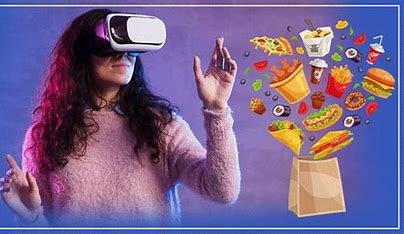
VR in Food Industry Training: Revolutionizing Skill Development and Safety
The food industry—whether in restaurants, catering, or food production—requires employees to learn a variety of tasks under high pressure. VR (Virtual Reality) is now being integrated into training programs to enhance learning experiences and boost safety. This immersive technology allows trainees to practice skills in a realistic virtual environment, enabling better preparation and skill development without the risks or waste of traditional methods.
1. Immersive, Realistic Training Scenarios
Traditional training often relies on demonstrations, role-playing, and hands-on experience, which can be time-consuming, expensive, and sometimes risky. VR offers a more immersive, controlled environment where staff can experience situations that simulate the real world without leaving the training facility.
- Virtual Kitchens: Trainees can practice cooking, food handling, and kitchen management in a virtual kitchen setup that mirrors the real thing.
- Simulated Customer Interactions: For front-of-house staff, VR can simulate customer service interactions, allowing them to practice communication, handling complaints, and more in a realistic setting.
- Emergency Drills: VR can also simulate emergency situations, like kitchen fires or food safety hazards, helping staff practice how to react in high-stress, high-risk scenarios.
2. Improved Skill Development
One of the key advantages of using VR for training is the ability to practice skills repetitively without waste or the need for resources that would be used in a real kitchen. It also allows staff to learn at their own pace and improve over time.
- Hands-On Experience Without Waste: Trainees can practice cooking dishes, preparing ingredients, or managing kitchen tasks repeatedly in a virtual environment without wasting actual ingredients.
- Skill Mastery: VR training can be customized to focus on different levels of complexity, from basic knife skills to advanced culinary techniques, so that each trainee can develop and refine their skills gradually.
- Feedback and Tracking: Many VR systems offer real-time feedback, allowing trainees to correct mistakes immediately, and progress is tracked so trainers can monitor improvement.
3. Enhanced Safety Practices
Food safety is critical in any food service or production environment, and VR training allows employees to get hands-on experience in safe, controlled simulations before applying it in the real world.
- Safe Handling and Hygiene: Trainees can practice food safety protocols—like proper handwashing, sanitizing surfaces, and handling raw ingredients—without the risk of contamination.
- Accident Prevention: VR can simulate dangerous kitchen scenarios (like burns, cuts, or spills) so employees can practice correct responses without any actual risk of injury.
- Foodborne Illness Prevention: Simulations can also teach how to manage food temperatures, storage, and cross-contamination, reinforcing good habits without risking real foodborne illness outbreaks.
4. Improved Efficiency and Cost Savings
Training with VR can reduce overall costs in multiple ways, both short-term and long-term:
- Fewer Resources Wasted: Traditional training requires ingredients, tools, and equipment that can be costly—especially when trainees make mistakes. VR cuts down on this waste since everything is virtual.
- Faster Onboarding: New staff can be trained more quickly, reducing the time it takes to get them up to speed in a real kitchen. This improves staff turnover rates and ensures efficiency from day one.
- Customizable Training: Training modules can be adjusted based on the needs of the individual employee or specific kitchen roles, meaning less time is spent on irrelevant tasks or procedures.
5. Risk-Free, Real-World Practice
In a traditional kitchen setting, errors can result in product waste, safety hazards, or damaged equipment. With VR, trainees can experience high-pressure scenarios and practice critical decision-making skills without the consequences of failure in a real-world environment.
- Simulating High-Pressure Scenarios: VR can simulate the chaos of a busy restaurant shift or a large catering event, allowing staff to practice multitasking, managing customer orders, and dealing with stress in a safe setting.
- No Real-World Consequences: Mistakes like overcooking food, dropping dishes, or mixing up orders don’t result in real waste, injury, or negative customer experiences, which allows for more learning opportunities.
6. Increasing Engagement and Motivation
Training programs can sometimes feel repetitive or monotonous, leading to lower engagement from staff. VR can make learning more interactive and enjoyable, increasing motivation and commitment to training.
- Gamified Learning: Many VR training systems use game-like mechanics to keep trainees engaged. Employees can earn points, complete challenges, or level up, making the process fun while still educational.
- Engaging Visuals: VR allows staff to experience environments that are visually rich and immersive, enhancing focus and retention of learned skills.
Summary
Virtual reality is transforming food industry training by offering immersive, hands-on learning that is safe, efficient, and effective. By allowing trainees to practice in a realistic yet risk-free environment, VR helps employees develop critical culinary and safety skills while cutting down on waste, time, and cost. Whether it’s improving technical skills in the kitchen or ensuring proper safety practices, VR is revolutionizing how the food industry trains its workforce.
